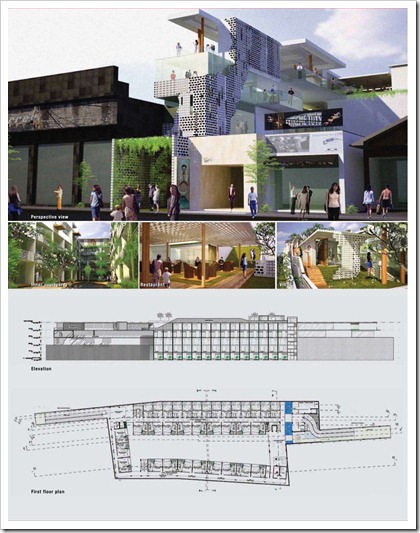
Architecture
The Akmani Legian represents itself as an 'iconic passage' for Kuta, especially in the Legian area, which links Legian Street and Banesari Street behind. This is derived from the local lifestyle, which is familiar with lively pedestrian traffic both during day and night. As the surrounding areas become increasingly clustered and 'grown up' in terms of business types, people on the street have less flexibility to manoeuvre. So Akmani Legian aims to address this issue.
The site for this hotel is unique in that it has only a 5-meter-wide opening from both Legian Street and Banesari Street, but it's spacious inside. The design seeks to attract the public from the streets to enter to not only to enjoy the facilities inside, but also to let them move around more freely within the Legian area.
The architects have designed quite a spacious inner courtyard to let the sun and air in. Slabs and walls are exposed; some parts are simply open, some are covered by full length glass windows. To enclose private areas such as the bathroom, they use plants and hang bamboos in vertical arrangements. The greenery box helps to preserve the vegetation; the bamboos create pleasant sounds like the traditional Balinese bamboo instrument call Rindik, preserving the local atmosphere. Kerawang brick is used for many purposes. The original form and shape is suitable to let sunlight and air in. Along the hotel corridor, lobby area and restaurant above, there is no need for any air-conditioning.
Design Process
From Legian Street, visitors will 'meet' the lobby before seeing the inner courtyard. To the left, they will walk to the more private pathway, which later will become the villa area; to the right, they can go up to the top, which also can be reached from Banesari Street, to mingle with the public.

0 comments:
Post a Comment